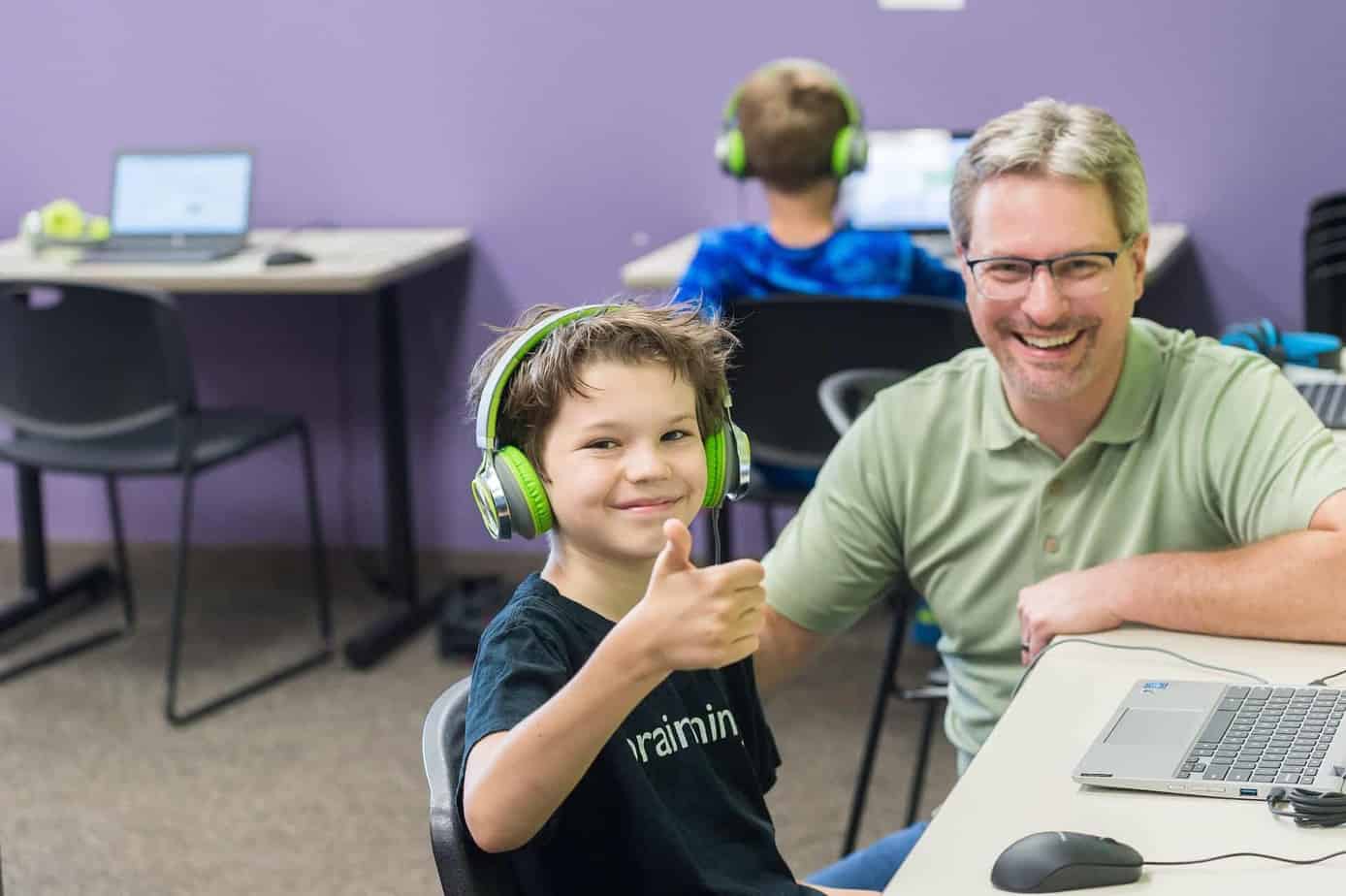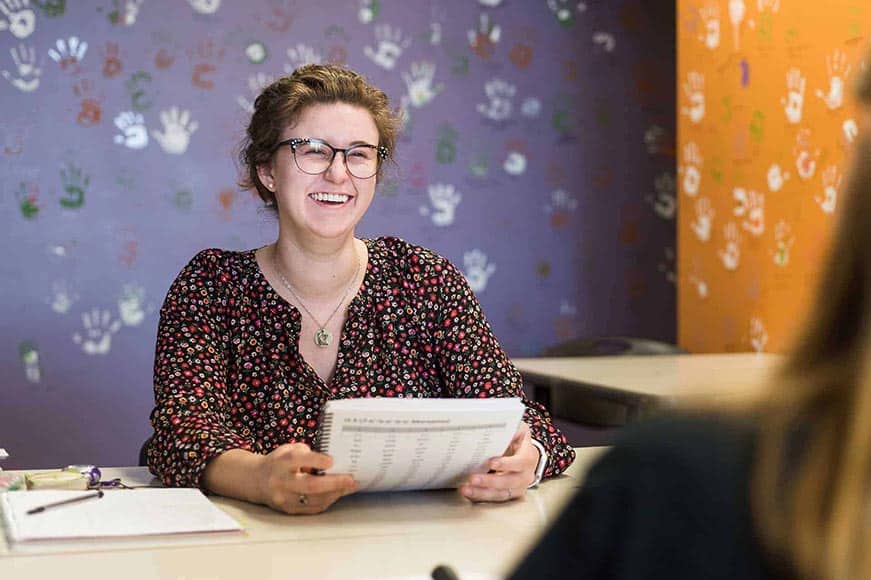Tips and Tools to Help Your Anxious Student
There are many reasons why your child may be an anxious student. For some, it’s bullying, lack of friends, or a learning struggle that makes them feel less smart than their peers. For others, it could be something at home—such a sick relative, lack of necessities, or neglect or abuse.
As a parent, your first job is to try to get to the bottom of the anxiety to see if there’s something that can be addressed. This will have to begin with an honest and nonjudgmental conversation with your child, and possibly a discussion with teachers, the school counselor, or even a private therapist who specializes in childhood anxiety.
While getting to the root of the anxiety problem will always be the best approach, you’ll also want to learn some tips to help your child self-soothe, regulate their emotions, an overcome some of their fears. Here are some of the best tips and tools to share or practice with your student.
Regulate your own emotions.
Before you approach your child for a conversation about a disappointing grade, a tantrum they threw about going to school, or a behavior infringement in the classroom, ensure that you’re starting from a place of calm. You’ll need to regulate your own feelings to avoid making the situation worse by reacting out of anger, frustration, or fear. This also means leaving your own school- and childhood-related issues in the past, unless you’re sharing experiences and stories to commiserate with your child.
Reframe your thinking to be an active listener and take care to not inadvertently display body language or facial expressions that may indicate disapproval or close-mindedness.
Develop and stick to routines.
Creating and sticking to routines can create a sense of security for your child, set realistic expectations, and reduce stress for the entire family. This is especially true on school nights, when laying out clothes, pre-packing lunches, and reviewing homework can save time and help everyone feel in control.
Routines can feel especially comfortable to anxious children who like feeling prepared and who appreciate the sense of peace that comes from repetition rather than chaos.
Create a self-soothe bag.
Self-soothing bags (or boxes) can help children calm themselves when they’re feeling particularly panicked or anxious about school. They should be filled with things of your child’s choosing, although parents may be able to help suggest items.
Most experts will recommend sensory-stimulating objects, such as fidget toys, stress balls, molding dough, scented oils, candles, a favorite stuffed animal or doll, and some form of music or soothing sound machine. You may also want to consider purchasing cards with calming techniques, positive affirmations, or uplifting quotes. Photos showcasing people, places, or positive memories can also be helpful. Some children find that diaries, coloring books, or journals with brightly colored pens, pencils, or markers can also provide a creative means for putting your thoughts down on paper in words, doodles, or drawings.
And finally, if your child has a favorite relaxing hobby—such as knitting, building, or doing sudoku or word searches—suggest that they include some paraphernalia in the bag. It’s worth noting that while boxes work just as well, you may want to use a bag to take self-soothing on the road for sleepovers, card rides, and errands that require long waiting times.
Teach them several calming techniques.
Calming techniques work differently for everyone and you’ll need to find those that fit best for your child. A few to consider include meditation, breathing exercises, journaling, and visualization. One of the fastest ways to help a child shift from “flight, fight, or freeze” mode to “rest and digest” mode (the latter of which lowers your heart rate and relaxes your muscles) is with simple deep breathing. Consider the 4-7-8 breathing exercise (inhale for a count of 4, hold the breath for a count of 7, and then exhale for a count of 8) because it’s effective, memorable, and can be done anywhere.
Celebrate small achievements.
Many kids with anxiety focus on what they’ve done wrong or might do wrong. Look for opportunities to recognize small achievements, even if it’s just getting out the door on time for school or handing in a project by the deadline. You can also boost their confidence by hanging homework, artwork, and positive feedback from teachers on the refrigerator or another high-traffic area in your living space.
Create a worry jar.
Have your child decorate a container—such as a mason jar or shoe box—in which they can store their written (or drawn) anxious thoughts. Some children feel safer and less stressed after physically “getting rid of” their worries, and many even appreciate having a routine to sort their worries out before bed, after dinner, or before starting the school day.
Focus on sleep quantity and quality.
Most children need at least 9 to 10 hours of sleep a night for ideal growth and development. But a good night’s sleep can also help with mood, attention, impulse control, sleepiness, and memory.
Help your child create a nighttime routine that will ease them into sleep. This might include a warm bath, soothing music or nature sounds, reading a book rather than using technology, chamomile tea, or possibly sleep-inducing supplements, such as melatonin, if recommended by your doctor.
Be aware of any added stressors you might be bringing to the table—such as discussions about grades, chores, big decisions, or other responsibilities that might cause your child to feel anxious right before bed.
Make time for physical activity.
Many parents make the mistake of assuming that exercise benefits kids with anxiety by tiring them out. While that may be true, especially for kids who may have trouble falling asleep, there are plenty of other reasons to make time for physical activity.
For example, sports and other types of group exercises can provide a temporary distraction from negative thoughts while creating social connections. Just being engaged in an activity with others—even if there’s no interaction—can help a child feel less lonely or self-conscious. In addition, physical activity can improve a child’s self-esteem by allowing them to master new skills, feel in control of their body, or even gain or lose weight to be healthy. But perhaps most important of all, exercise can elevate a child’s mood by stimulating the production and release of chemicals that reduce anxiety and fight depression.
Build Their Cognitive Capacity With Targeted Training
Many kids feel anxious about school because they feel like they “can’t” do something. By improving the way their brain interacts with the world, you open them up to be able to experience greater resilience and the ability to learn more easily—which in turn boosts their confidence! There’s a reason that many graduates from LearningRx programs reports improved confidence and attitudes towards school. When you target the brain skills they’re using to think and learn, it can help them unlock their fears and worries about learning and grow in their skills and confidence.
Every outcome is unique and your child’s brain is unique, but we’d love the chance to chat more about how brain training may be a helpful tool to give them the boost they need to overcome their school anxieties and grow their confidence!







